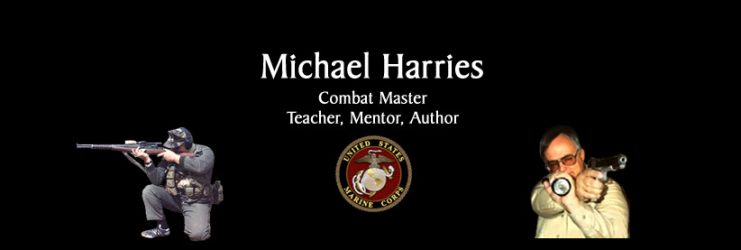I’ll have no idea what went on at the rifle event until I read about it in these pages, so I’ll tell you about some of my adventures in the “blast furnaces” of Arizona, on my recent trip to API.
First off, Gunsite, a.k.a. American Pistol Institute (API), has been sold to a gentleman named Richard Jee (who is a doctor, I believe), and a former API-staff instructor who is still capable of teaching) and its new official name is the Gunsite Training Center. Rich owns the land, buildings, and business, but Janelle and Jeff Cooper will reside in their house for as long as they live. Jeff Cooper is retained as the director of the school, doing all the same things he has always done. In effect, a plan has been developed which will allow Gunsite to continue on into the 21st century and to carry on Jeff’s work, even after he goes to that big range in the sky.
It was feared by many of us on staff that upon Jeff’s death, the school would grind to a halt without any clear-cut line of succession, and that Cooper’s relatives (heirs) would break up the assets of the school and sell off the property, thus destroying one of the world’s greatest small-arms training facilities. Well, all that is taken care of now. The school will go on, and Cooper’s legacy will be brought to new generations of shooters.
While I was there teaching, I had some interesting experiences with “Combat Tupperware” (the Glock pistol). I had one male and two females, on my end of the line, using them. The married couple among these three showed me that it was possible to speed-unload the Glock! The removable base-plates of Glock magazines have a tendency to pop off when the magazine is dropped, when half-full or better, during a reload. (Other pistol magazines of the same general base-plate type will do the same thing.) Now, you might think that this is only an annoying trait that happens in practice. Oh, yeah? Have any of you ever dropped a magazine by accident? I have, and I don’t ever want to have to play pick-up-and-reassemble just before I head out the door for an alarm-and-excursion.
But the real trouble (with 10 magazines between them) was that my married couple developed a technique to disassemble those magazines during a speed load! By hitting the bottom of the magazine up and forward, and holding the pistol just a little too far away from the body, they both made floor-plates come off with monotonous regularity and showered the mat with shiny 9mm rounds and magazine parts — some of which were found as far as 10 feet away.
However, all’s well that ends well. Right? I showed them my reloading technique and, after a whole lot of wailing and gnashing of teeth, they stopped doing it wrong. And, in good Hollywood fashion, the wife was 4th in the shoot-off, right behind three Experts who finished 1st, 2nd, and 3rd. We made her an “M1” (Marksman, 1st Class) and her husband an “M” (plain vanilla Marksman), which he will just have to learn to live with. Training, as well as war, can be hell at times, can’t it?
I saw Bob Young (Colonel, USMC, freshly retired) who was Provosting in the .223 class, but we didn’t have much time to talk; and I met the Marine Warrant Officer, who was there for the class, who has invented a night sight that Colt Firearms is coming out with — he should make lots of royalties off that.
I didn’t see it at night, but it works on the “bracket” principle: you have a thin, luminous part on either side of the target, instead of just a single post which can sometimes obscure the target because it is so much brighter than what you’re shooting at, at rifle and carbine ranges. I’ll tell you more when I know more.
A reminder: the Long Range Event is now on Sunday the 13th. Also, I am putting on a separate night event that same evening — bring your night gear and stay after the LR event, you’ll get some ZEROING time along with the “war stories” we all will be telling.
